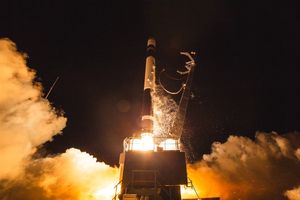Deep Space Network Continues to Explore the Universe
NASA’s Deep Space Network (DSN) is one of the critical infrastructures supporting humanity’s exploration of deep space. It enables communication with spacecraft located hundreds of millions of kilometres away and aids in our understanding of the solar system and the broader universe beyond.

WASHINGTON, D.C. (Merxwire) – NASA’s Deep Space Network (DSN) is a global communication system used by the National Aeronautics and Space Administration (NASA) to support deep space exploration missions. This system ensures uninterrupted 24-hour communication between spacecraft and Earth, with three major stations located in California (USA), Madrid (Spain), and Canberra (Australia). The DSN supports interplanetary missions and assists scientists in studying the solar system and the broader universe through radar and radio astronomy observations.
NASA’s DSN comprises a series of giant radio antennas distributed across the Earth’s surface at approximately 120-degree intervals to ensure that at least one station can send and receive signals as the Earth rotates. Specifically, the three stations are Goldstone in California (USA), Canberra in Australia, and Madrid in Spain. Each station is situated in a relatively isolated, elevated area to reduce radio interference and ensure clear signal transmission.
The primary responsibility of the DSN is to maintain two-way communication with space probes. Ground control centres can send commands to the probes via the DSN, monitor their status, and receive images and scientific data from the depths of space. These antennas are also responsible for tracking the location and velocity of spacecraft, ensuring the mission’s safety and precision. For example, during complex mission operations, the DSN sends precise commands to assist spacecraft in adjusting their orientation, changing orbits, or performing other manoeuvres. In addition, the DSN can conduct scientific experiments by measuring changes in radio signals, such as studying Saturn’s rings, analyzing planetary interiors, or testing general relativity.
To further optimize the efficiency of its global communication network, NASA introduced the “Follow the Sun” operational strategy. This strategy reduces operators’ workload and improves the network’s reliability by allowing each station to manage global communications during daytime hours. For instance, when the Canberra station in Australia enters daylight, it takes over global communication tasks. When Canberra enters nighttime, the Madrid station in Spain or the California station in the USA continues the mission. Since implementing this strategy in 2017, the DSN’s data transmission performance has significantly improved, contributing to several critical missions such as TESS (Transiting Exoplanet Survey Satellite), the InSight Mars lander, and the Parker Solar Probe.

The Deep Space Network currently supports over 40 deep space missions, and many more missions are expected to join. NASA relies on this critical network to advance scientific exploration within the solar system, covering planets, moons, asteroids, and more. With the support of the DSN, space probes can transmit large amounts of valuable scientific data back to Earth, helping scientists better understand the origin, evolution, and characteristics of the solar system and other celestial bodies. As future deep space missions unfold, the Deep Space Network will remain an indispensable link in our universe exploration, playing an irreplaceable role in this endeavour.
More News
View More



Recent Quotes
View More
Quotes delayed at least 20 minutes.
By accessing this page, you agree to the Privacy Policy and Terms Of Service.